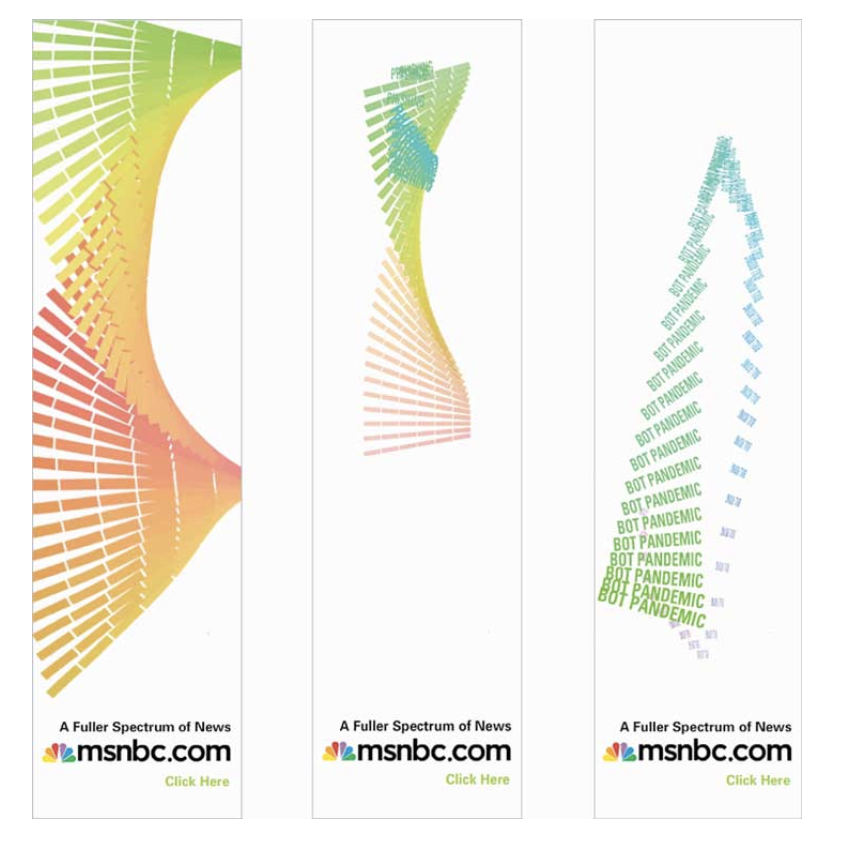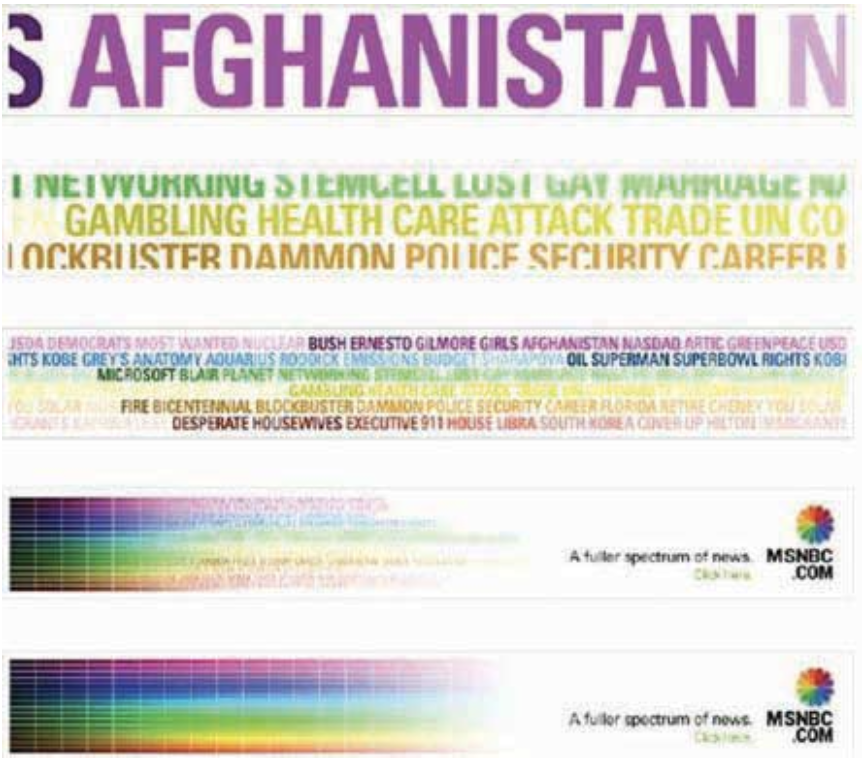13.6: Banners en línea
- Page ID
- 66658
Los elementos creativos de la campaña online tenían que ser atractivos para poder entregar la Gran Idea de disfrutar del viaje (“Dive In. Swim Around.”), así que el equipo se dispuso a hacer pancartas interactivas y atractivas. Los banners aparecieron en diferentes sitios desde ESPN (http://espn.go.com) hasta The Weather Channel (http://www.weather.com), con mensajes únicos y enlaces para cada una de esas ubicaciones únicas.




La prensa comenzó, y los elementos iniciales de lanzamiento pagado corrieron fuertemente durante las primeras seis semanas. A medida que continuaban por el resto del plan de comunicaciones, se introdujeron más elementos. Los elementos de marketing eran dispositivos que, si bien se introdujeron durante la campaña, vivirían después de que los anuncios dejaran de publicarse. Aún puedes encontrar estos elementos interactivos yendo a msnbc.com; hay aún más de ellos desde el lanzamiento de la primera campaña en abril de 2007.


